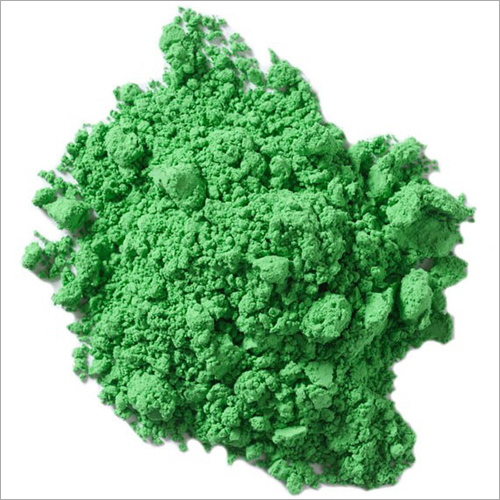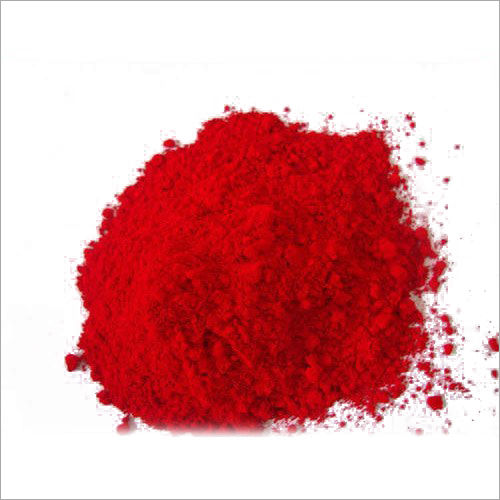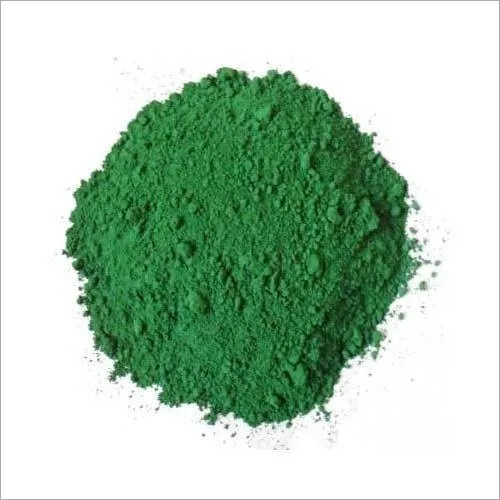Green Pigment Powder
440 INR/Kilograms
Product Details:
- CAS No 1328-53-6
- Chemical Name Green 7 Pigment
- Physical State Powder
- Color Green
- Purity(%) 99%
- Click to View more
X
Green Pigment Powder Price And Quantity
- 100 Kilograms
- 440 INR/Kilograms
Green Pigment Powder Product Specifications
- Green 7 Pigment
- 1328-53-6
- Green
- 99%
- Powder
Green Pigment Powder Trade Information
- 50 Kilograms Per Month
- 4-5 Days
- All India
Product Description
We are prominent manufacturers and suppliers of Green Pigment Power that is processed using premium quality basic materials, keeping in mind the right chemical combination. The offered green pigment is acknowledged by our clients for eco-friendliness and excellent physical properties.Green Pigment Powder is used for adding green color to the products and is applicable in textile, rubber, paint, ink, plastic and other industries.
Green Pigment Powder Features:
Green pigment powder, also known as green pigment dye or green colorant, is a powdered substance that imparts a green hue when added to various materials such as paints, inks, cosmetics, plastics, and more. Here are some common features and characteristics of green pigment powder:
1. Color Variations: Green pigment powders come in a wide range of shades, from light and vibrant greens to deep and dark greens. The specific shade depends on the formulation and composition of the pigment.
2. Composition: Green pigment powders can be made from various chemical compounds and minerals. Some common ingredients used to create green pigments include chromium oxide, phthalocyanine, cobalt salts, iron oxides, and copper compounds.
3. Lightfastness: The lightfastness of a pigment refers to its ability to resist fading or changing color when exposed to light over time. High-quality green pigments are designed to have excellent lightfastness, ensuring their color remains stable and vibrant.
4. Chemical Stability: Green pigment powders are generally chemically stable and resistant to degradation, allowing them to maintain their color properties even when exposed to different environmental conditions.
5. Particle Size: The particle size of green pigment powders can vary depending on the intended application. Finer particles are typically used for products like paints and inks, as they provide smoother and more even color dispersion. Coarser particles may be suitable for certain industrial applications.
6. Solubility: Green pigment powders can have different solubility properties depending on their composition. Some pigments are insoluble in water and require dispersing agents or binders to incorporate them into water-based systems. Others may be soluble in specific solvents, making them suitable for use in certain applications.
7. Compatibility: Green pigment powders are compatible with various base materials, including water-based systems, oils, waxes, and plastics. This versatility allows their use in a wide range of industries and applications.
8. Non-Toxic Options: Many green pigment powders are available in non-toxic or low-toxicity formulations, making them safe for use in cosmetics, food contact materials, and other sensitive applications. However, it's essential to check the safety data sheet (SDS) or product specifications to ensure compliance with specific regulations.
9. Mixing and Blending: Green pigment powders can be easily mixed or blended with other pigments to create custom colors. This versatility allows for endless possibilities in achieving the desired shade or tone.
Frequently Asked Questions:
1. What is green pigment powder used for?
Ans: Green pigment powder is used to add a green color to various materials such as paints, inks, cosmetics, plastics, soaps, candles, and more. It is commonly used in artistic and industrial applications to achieve desired green hues.
2. How do I incorporate green pigment powder into my project?
Ans: The method of incorporating green pigment powder depends on the specific application. In general, the powder can be mixed with a suitable binder or medium, such as water, oil, or a resin, to create a homogeneous mixture. The mixture can then be applied or added to the desired material or product.
3. Can green pigment powder be mixed with other pigments?
Ans: Yes, green pigment powder can be mixed with other pigments to create custom colors. By combining different pigments in varying proportions, you can achieve a wide range of shades and tones.
4. How much green pigment powder should I use?
Ans: The amount of green pigment powder needed depends on the desired intensity of the green color and the specific application. It is recommended to follow the manufacturer's instructions or conduct small-scale tests to determine the appropriate amount for your project.
5. Are green pigment powders safe to use in cosmetics?
Ans: Many green pigment powders are considered safe for use in cosmetics, but it's essential to ensure that you are using pigments specifically approved for cosmetic applications. Look for pigments that comply with relevant regulations and guidelines, and follow the recommended usage rates provided by the manufacturer.
6. Are green pigment powders environmentally friendly?
Ans: The environmental impact of green pigment powders can vary depending on their composition and production process. Some pigments may contain environmentally harmful substances or require special handling. It's advisable to choose green pigment powders that are labeled as environmentally friendly or non-toxic, whenever possible.
7. How do I store green pigment powder?
Ans: Green pigment powder should be stored in a cool, dry place, away from direct sunlight and moisture. Proper storage helps maintain the color stability and extend the shelf life of the pigment. It's also important to keep the powder in a tightly sealed container to prevent contamination or moisture absorption.
8. Can I use green pigment powder for dyeing fabrics?
Ans: Green pigment powder is not typically recommended for dyeing fabrics, as it may not provide even color penetration or long-lasting results. Fabric dyes specifically formulated for textile applications are generally a better choice for achieving vibrant and durable color on fabrics.
9. Can I use green pigment powder in food or beverages?
Ans: No, standard green pigment powders are not intended for use in food or beverages. When it comes to coloring food products, it's essential to use specifically approved food-grade colorants that comply with applicable food safety regulations.
Tell us about your requirement

Price:
Quantity
Select Unit
- 50
- 100
- 200
- 250
- 500
- 1000+
Additional detail
Mobile number
Email







 Send Inquiry
Send Inquiry Send SMS
Send SMS
